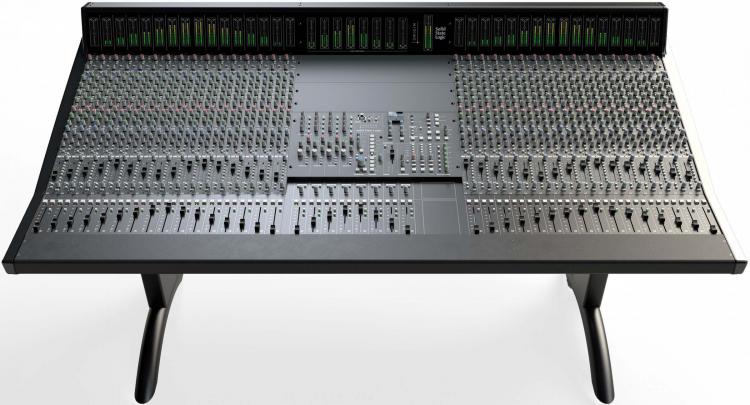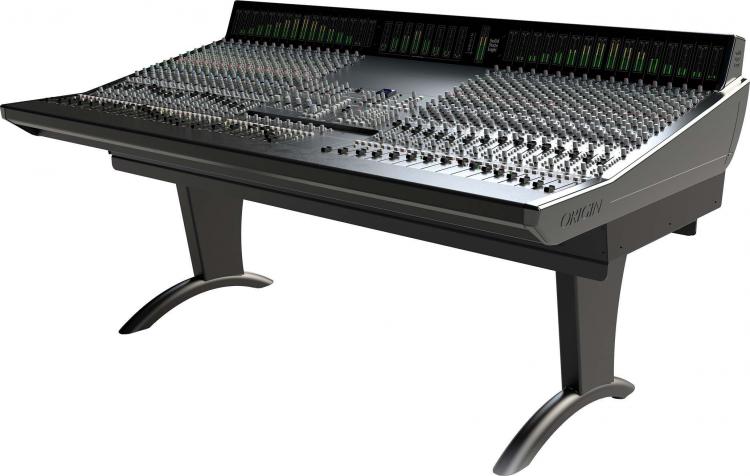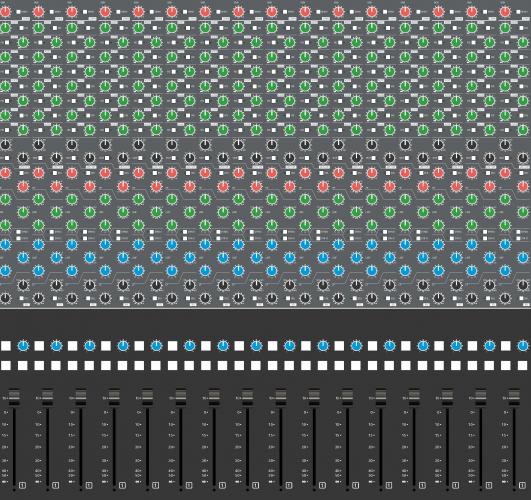
Meadow
Members-
Posts
20 -
Joined
-
Last visited
Meadow's Achievements

MIDIbox Newbie (1/4)
0
Reputation
-
Hey everyone I'm trying to connect my MF_NG module to my STM32F4 Core via the MIOS IO. When connected via a different midi interface, the MF_NG module works perfectly fine. But I cannot get the connection via the MIDI IO module to work. Is there any special configuration in the NGC file I need to consider? I tried to route the incoming midi signals to the core like this: EVENT_MF id=2 ports=11111111000000000000 MF n=1 enabled=1 midi_in_port=IN1 midi_out_port=OUT1 config_port=USB2 chn=1 ROUTER n=1 src_chn=All dst_port=OUT1 I'm guessing it's wrong. Has anybody the answer to this? I'm starting to loose my mind over here... All the best! Frederik
-
Sounds like a good option, since the modules are still out of stock on modular addict. I could find a .brd file on the ucapps Page. There's only the note I should ask SmashTV. But I think they went out of business? I couldn't find any information on them Can I get the layout data anywhere else? Aisler need the .brd file, am I right?
-
Hey everyone! I'm searching for dummy plugs for some AINSER 64 modules. I need dummy plugs for 10 pin headers. Can I purchase them anywhere or do I have to build them myself? Thanks for any answers! Frederik
- 1 reply
-
- ainser 64
- dummyplugs
-
(and 4 more)
Tagged with:
-
Washa Stefanos started following Meadow
-
Thank you for your response. OK I will try Aisler. Thank you. I wrote Modular Addict and the replied, that maybe the will have more available in a month or so. But I got the same response two months ago when I asked them the same question.
-
Hello everyone. I'm in the middle of a project and need some more DIN modules. Unfortunately they're out of stock at modular addict. Is there another seller, where I can purchase the modules? I live in Germany and. I could't find another seller besides modular addict. Thank you in advance! Have a nice day! Frederik
-
Ok that is very helpful! It's going to be quite a big controller...so this is really important information! Thank you :) So the length of single wires for e.g. Din or Dout is not that important, but for pots and faders it is?
-
thanks for your replies! ok that helps a lot! You mean because of jitter, or latency? How close should I position the modules?
-
Hey! I'm pretty much done with planning my DAW controller but I have some questions about cores, precisely how many modules I can connect to them. I know this is probably beginner knowledge, but I couldn't find the right answers and also couldn't find other posts about this. Now my questions: - I can connect two AIN64 modules to one core. But is this all the core can handle or is it possible to also connect other modules to the same core, like Din modules, or mf modules etc? - Is it possible to cascade button matrices? Or do I need a new Core for every new matrix? Thanks in advance for your time :) Have a nice day! Frederik
-
Thank you for your reply! I’m sorry I meant switch. A snap action switch is a switch which stays pressed until pressed again. I only searched for the German term „rastend“ but couldn’t find the right one. I’m still not sure, if it would be easier so find very small switches and add my own button caps. The SSL EQ strip consists of four buttons and a LED next to everyone. I don’t want to add more DOUT modules for the LEDS, I simply want to chain them after the switch so they will be on when the button is pushed. Therefore I need snap action switches These will be the only switches, which will be not controllable from the software side - for switching to another project, but I’m ok with this because otherwise I would need 416 additional DOUT outputs. So you suggest because I will have several cores just connect one mf module to one core, which is also connected to for example AIN modules via this Midi IO module? Ok and then control them via an additional DOUT module? I calculated for 33 channels (32+Main) I need 660 DOUT pins. Is this practical? And would you recommend to use cheap preaselmbled LED strips like this, https://www.banggood.com/de/Mini-Dual-12-Level-Indicator-VU-Meter-Stereo-Amplifier-Board-Adjustable-Light-Speed-Board-With-AGC-Mode-DIY-Kit-p-1625594.html?utm_source=googleshopping&utm_medium=cpc_organic&gmcCountry=DE&utm_content=minha&utm_campaign=minha-de-de-pc¤cy=EUR&cur_warehouse=CN&createTmp=1 or soldering your own LED strips?
-
SSl Blog Post 02 Hello again, Last time I wrote about the design process of my console. In this post I want to focus on the electronic part. In the last couple of weeks I searched for the right knobs, faders and pots for the project and I nearly found all I need. The pots were the simplest part. I opted for the Alpha 10k Lin https://www.musikding.de/Alpha-Potentiometer-16mm-10k-lin Each channel will have one motorized fader. Here I choose the PSM01-082A-103B2. https://www.mouser.de/ProductDetail/bourns/psm01-082a-103b2/?qs=MAZTpT1IVl8rvdecO07rRA==&countrycode=DE¤cycode=EUR 14,76€ when I buy more than 25 is a good deal I think. The ones from alps are very pretty, but with prices over 30€ per piece they are quite expensive especially because I need 33. For the bus channels I opted for simple 60mm faders. Also 10k lin, not very investing. https://www.reichelt.de/schiebepotentiometer-stereo-10-kohm-linear-rs60n12-lin10k-p73870.html?&trstct=pol_1&nbc=1 The knobs where a little harder to find. For the Solo Cut and Rec knobs I want to have knobs with Leds which I can connect to an DOUT module separately. So I could press Solo on the console but deactivate it inside my DAW and the LED would follow my actions. After quite a bit of searching and some phone calls with distributors I finally found these. https://de.farnell.com/nidec-copal-electronics/cfpb-1cc-4w9/drucktaster-spst-0-005a-5vdc-panel/dp/3498758 The knobs inside the channel strip are still to be found. The need to be snapaction knobs with a white cap with the measurements of 5mm per side. I couldn’t finde the right ones even after quite some hours of searching. Maybe I’m just searching without the right search terms? Maybe someone of you knows the answer to that problem I didn’t start the search for LEDs just yet. I think and hope these should be easy to find. For the modules I chose STM32F4 for the cores, AINSER 64 for the pots and faders, NG MF for the motorfaders, DIN for the knobs and DOUT for the LEDs. I especially need quite a lot of AINSER modules and I’m still figuring out a way to connect more than two to an STM32F4. I found some blogposts but could get the answer out of these. They suggested it should be even possible to connect more than three? I obviously want to use as less cores as possible. This build will be huge either way. I can connect the MF modules directly to a pc without a pc. Thats what is written on the website. But how do I connect these to the pc? Via midi? There is no USB port on these modules right? And I also should cascade them. I need 5 modules. I want to use 33 motorized faders and that’s quite unfortunate because every mf module only supports 8. How do I cascade these modules? Also via MIDI? The last problem I ran into is the meter bridge. This could be a whole blogpost of its own… My plan was, or partly still is to use 10 7“ displays connected to a 10 times HDMI splitter, which tells the PC there is only one REALLY big screen. But after buying quite some displays to test out I figured out 90% of the screens for sale online are totally crap! Ok, I searched for quite cheep ones, but I need 10 of them and if I had unlimited money I would buy the original ORIGIN console… But I don’t have access to unlimited amounts of cash so I need a cheap display which works. The first one I ordered was the perfect size and easy to operate. But I only could see the image looking from one specific angle. Moving my head just a little bit the whole display would turn blue. The second one was advertised to be 7“, but the one that were delivered to my was only 3,5“…are you kidding me? Out of anger I searched for analog VU meters. I really like the looks of these and figured out these work with voltage. Is it possible to drive VU meters with a midibox module? Maybe with an AOUT module? So many more questions but I already wrote a whole book here…sorry for that. If you still reading in this point thank you very much! Have a nice day! Frederik
-
I plan to use alpha pots. I got them recommended from a friend. Hopefully they will do a good job. I found an article in another thread which referred to the possibility to use 3 cores or even more. I found some background information about using 3 cores with an stm32f4 but not more. There should be a limit to the core processing wise but unit now I couldn't find the numbers. Thats an interesting idea with the minicomputers. I have to look into that! Thank you very much so far :)
-
Thank you for you're replies! I also thought about using endless pots, but I want to have the hard stops in the pots to work without looking. When I load a different song the DAW shouldn't change any settings as long as I don't touch any pots. If I'm right, the DAW safes the last information and will only change it when she receives a new information. So the pot wouldn't point in the same direction as the plugin, but the plugin would be still on the right position, right? I especially want to use analog pots, cause I like the stiffness in turning them more over the haptic of endless pots. There will be a lot... Roughly counted over 1000 Pots/ Faders and Knobs. I plan on using multiple cores running parallel, but I will write about that in a next post - still have some researching to do. I need to write a program, which can export the level information out of the DAW. Then I need a design like an meter bridge showing the levels. This program will sit on top of the DAW. I am currently working with Ableton. I think this should as a midi remote script, but if not I still can program a Max 4 Live app which sends the meter information into my meter bridge program.
-
Hey This idea is probably very stupid and very expensive… I want to build my own SSL Console. I wanted to have a console like this for years, but with a starting price of around 50.000€ even the cheapest one is still way too expensive for me. I’m not building an audio mixing console, I’m building a DAW controller with the layout of the current ORIGIN console. Luckily most of the legendary SSL hardware components are available as plugins. I think and hope the MIDIbox modules and software should be the answer to all my problems, but I hope and would kindly ask for help and or improvements on my design and use of the components. 1. Design My friend Ole and me startet the design in Adobe inDesign. He works as a graphic designer and pretty much knows his way around all the adobe design software so we startet working. For the layout we take the ORIGIN console as an example. Therefore the controller should consist of 32 channels, 16 on each side, a mastering section and a Bus section. We nee to change some parts in the layout because we don’t need all the routing possibilities, because it’s just a controller not an analog console. Working with the real measurements of an SSL I found on the website of https://www.recycledaudio.co.uk and inspired by pictures of the ORIGIN we came up with this design. Every channel has a motorized 100mm fader with 3 buttons for solo, cut and arm and a Pan knob at the bottom. Above that is the EQ unit and above that 8 free programmable knobs mainly for busses. At the top is a Gain knob and a mono button. Working with a DAW controller all my stereo channels still are routed to one channel inside the DAW. Therefore I can’t split a stereo channel on two channels and the mono button will help differentiate between mono and stereo channels. I am currently working on a MacBook Pro. Because of this I need some space in the mastering section for my laptop to sit. I will build this section modular, so I can change the plate where the laptop sits to another one where a keyboard and a trackpad could sit, if I choose to work on a desktop PC in the future. The. Laptop will sit on a grid with fans below. This way I hope I don’t have to run the fans of the MacBook as high, because they are quite noisy. Next to the MacBook is the transport section with some basic control knobs and buttons. Above the laptop is the bus fader section, consisting of 8 60mm Faders and Solo and Cut buttons. The whole front panel of the console will be made out of 3 mm thick metal. All the holes and cuts for the hardware will be cut by a laser cutting firm. Adobe Illustrator can export DXF files with which the firm can work. Last but not least on top of the console will be a meter bridge. The meter bridge will be build out of 7“ LCD monitors and merged to one big screen with an 10 times HDMI splitter like this one: https://kvm-switch.de/de/VS0110HA.html I will post the next part in the next days, talking about the hardware components and the midibox modules. This is going to be a very hard to build project, but I think also a lot of fun! Thanks for sticking around after that long text! Frederik / M e a d o w SSL Laser Vorbereitung.pdf SSL Design Oberfläche ganz (Ohne Schrift).pdf
-
Ok, I think I will work with pots, because I want to see the settings and position of the Plugin on the channel strip and don't want to look at the screen to see, which direction the pot is looking at. That would mean, I only need AIN modules, MF modules and cores, right? Do you know, if there is a maximum cascading option for the AIN modules connected to one core?



